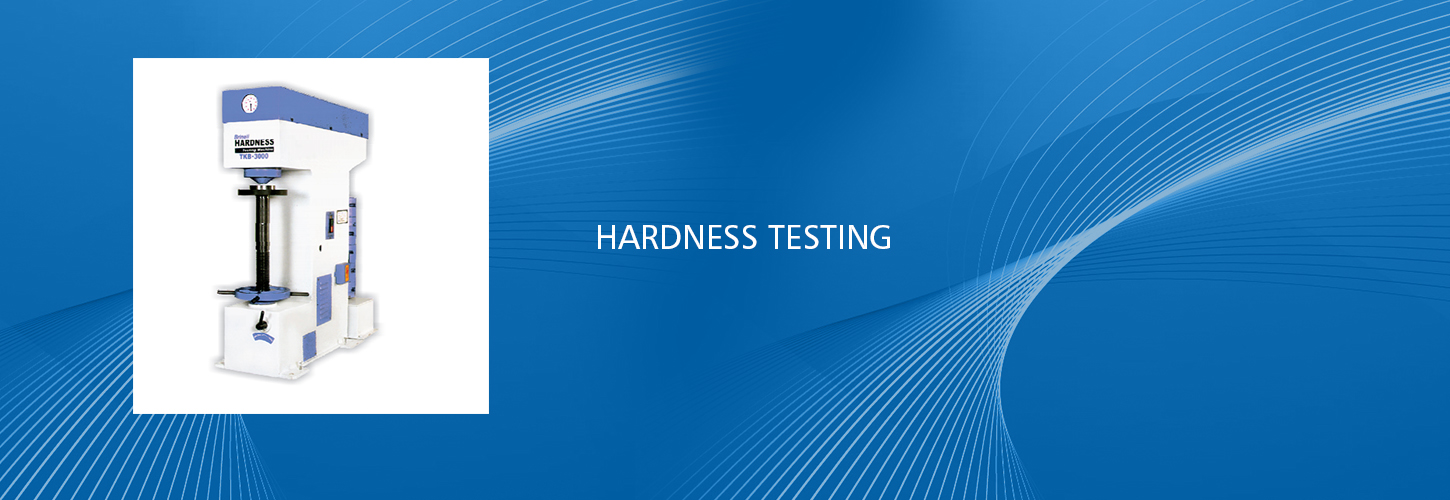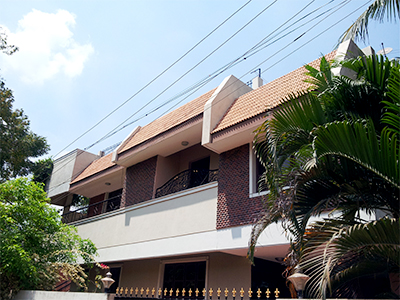


The Rockwell scale is a hardness scale based on indentation hardness of a material.
The Rockwell test measuring the depth of penetration of an indenter under a large load (major load)
compared to the penetration made by a preload (minor load). There are different scales, denoted by a single letter,
that use different loads or indenters. The result is a dimensionless number noted as HRA, HRB, HRC, etc.,
where the last letter is the respective Rockwell scale . When testing metals, indentation hardness correlates linearly with tensile strength.
The Brinell hardness test method as used to determine Brinell hardness, is defined in ASTM E10. Most commonly
it is used to test materials that have a structure that is too coarse or that have a surface that is too rough
to be tested using another test method, e.g., castings and forgings. Brinell testing often use a very high
test load (3000 kgf) and a 10mm diameter indenter so that the resulting indentation averages out most
surface and sub-surface inconsistencies.....
The Brinell method applies a predetermined test load (F) to a carbide ball of fixed diameter (D) which is held
for a predetermined time period and then removed. The resulting impression is measured with a specially
designed Brinell microscope or optical system across at least two diameters – usually at right angles to
each other and these results are averaged (d). Although the calculation below can be used to generate the
Brinell number, most often a chart is then used to convert the averaged diameter measurement to a Brinell hardness number.
Common test forces range from 500kgf often used for non-ferrous materials to 3000kgf usually used for steels and cast iron.
The Vickers test is often easier to use than other hardness tests since the required calculations are independent
of the size of the indenter, and the indenter can be used for all materials irrespective of hardness. The basic
principle, as with all common measures of hardness, is to observe a material's ability to resist plastic deformation
from a standard source. The Vickers test can be used for all metals and has one of the widest scales among hardness t
ests. The unit of hardness given by the test is known as the Vickers Pyramid Number (HV) or Diamond Pyramid Hardness (DPH).
The hardness number can be converted into units of pascals, but should not be confused with pressure, which
uses the same units. The hardness number is determined by the load over the surface area of the indentation
and not the area normal to the force, and is therefore not pressure.

True Value Calibration Services Pvt Ltd.,
#92, S R B Nagar Main Road,
Kolathur, Chennai - 600 099.
Ph: 9710222422/522/622
Cell:9444038060
M/s. TRUE VALUE CALIBRATION SERVICES Pvt Ltd.
No.42, DPF Street, P N Palayam
Near Lakshmi Mills Bus Stop,
Coimbatore - 641 037
Mobile: 9025229719
Ph : 0422-4399816
E-Mail: tvcsplcbe@gmail.com
Web. www.truevaluecalibration.com,